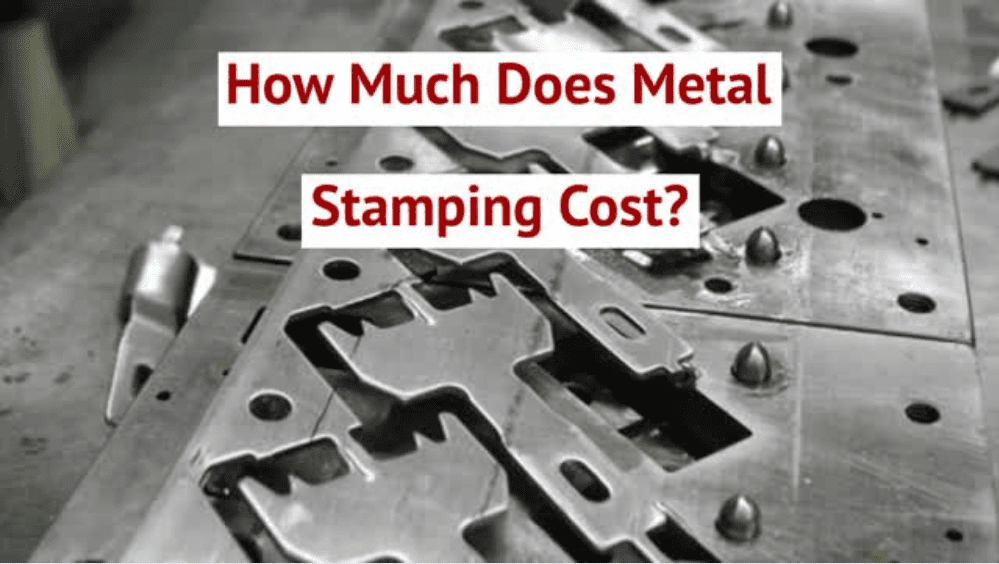Advanced Techniques in Metal Stamping for Accuracy Production
As markets constantly demand better resistances and complex styles in their metal elements, the pursuit for sophisticated methods in metal stamping has actually increased. From the usage of innovative multi-stage stamping processes to the combination of cutting-edge automation innovations, the landscape of metal marking is undergoing an extensive improvement.
Advanced Multi-Stage Stamping Processes
Discussing the complexities of innovative multi-stage marking processes discloses the innovative techniques utilized in contemporary manufacturing methods. Metal Stamping. Multi-stage stamping is an intricate procedure that entails numerous actions to transform a level sheet of steel right into a final stamped product. Using modern passes away, where different operations are executed at each stage of the marking process, permits for high accuracy and efficiency in the manufacturing of complex steel parts
Throughout the preliminary phases of multi-stage marking, the level steel sheet is fed right into the stamping press, where a series of passes away are utilized to cut and shape the product. Subsequent stages involve additional forming, bending, and punching operations to additional refine the part. Each phase is carefully made to build on the previous one, bring about the development of complicated geometries with tight tolerances.
Advanced multi-stage marking procedures require a high level of know-how and precision to guarantee the quality and uniformity of the stamped components. By utilizing innovative equipment and tooling, makers can create a vast array of steel parts with effectiveness and precision.
Precision Tooling Innovations
Precision tooling developments have actually changed the steel marking industry, boosting effectiveness and quality in manufacturing processes. CNC systems enable for elaborate styles to be translated directly right into tooling, making sure accuracy and repeatability in the stamping procedure.
Furthermore, the integration of sensing units and real-time surveillance capacities in precision tooling has actually made it possible for producers to identify and deal with issues immediately, reducing downtime and decreasing scrap rates. By including wise modern technology into tooling, drivers can enhance parameters such as stress, rate, and placement during the stamping procedure, resulting in boosted item quality and increased productivity.

Automation in Steel Stamping
The development of accuracy tooling technologies in the metal stamping market has actually led the way for substantial developments in automation, transforming the production landscape in the direction of boosted efficiency and performance. Metal Stamping. Automation in steel stamping includes the usage of advanced equipment and robotics to do various tasks traditionally executed by human operators. This shift in the direction of automation offers countless advantages, consisting of improved accuracy, faster manufacturing cycles, and decreased labor costs
One trick aspect of automation in steel stamping is the implementation of computer system mathematical control (CNC) systems, which make it possible for precise control over the stamping process. CNC innovation permits the production of facility and complex metal get rid of constant quality. In addition, automated systems can be programmed to run constantly, causing greater output rates and much shorter lead times.
Furthermore, automation enhances workplace safety and security by minimizing hands-on handling of hefty products and lessening the danger of accidents (Metal Stamping). As making sectors proceed to welcome automation, the future of steel marking holds wonderful promise for also higher performance and development
High-Speed Stamping Strategies

Among the main advantages of high-speed marking strategies is the capability to link produce a big quantity of components in a much shorter quantity of time compared to traditional stamping approaches. This boosted efficiency not just original site enables makers to fulfill limited production due dates yet likewise allows expense savings through economic situations of scale. In addition, high-speed marking can aid minimize material waste by enhancing the product use during the marking process.
Furthermore, high-speed marking strategies often incorporate innovative functions such as fast die change systems and real-time monitoring abilities, additionally boosting the overall performance and adaptability of the steel marking process. As innovation remains to advancement, high-speed marking is expected to play an important role in driving the future of precision production.
High Quality Control in Stamping Procedures
Effective top quality control actions are crucial for making certain the integrity and uniformity of steel stamping operations. Quality assurance in marking procedures includes a series of methodical processes targeted at finding and protecting against defects in the made components. One vital facet of high quality control in metal marking is the usage of advanced examination techniques such as optical inspection systems and coordinate determining makers (CMMs) to confirm the dimensions and tolerances of stamped parts.
Additionally, top quality control procedures in stamping procedures frequently consist of the execution of statistical procedure control (copyright) methods to keep an eye on the production procedure in real-time and make certain that it stays within acceptable restrictions. By evaluating information and identifying patterns, manufacturers can proactively resolve any kind of inconsistencies from the desired top quality requirements.
Additionally, high quality control in metal marking procedures likewise includes comprehensive material testing to guarantee that the raw products utilized fulfill the needed requirements for the stamping process. This may include performing material solidity tests, tensile toughness tests, and dimensional assessments to ensure the high quality and integrity of the stamped elements. Overall, carrying out durable quality assurance measures is essential for achieving premium stamped components continually.
Conclusion
To conclude, advanced techniques in steel stamping play an essential duty in precision manufacturing processes. Through multi-stage stamping procedures, innovative tooling solutions, Continued automation, high-speed methods, and rigorous quality assurance steps, suppliers can attain higher levels of accuracy and efficiency in their operations. These innovations in steel stamping technology have allowed business to create intricate components with limited resistances, eventually resulting in boosted item top quality and consumer fulfillment in the production industry.